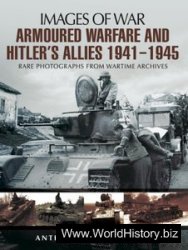Sent to Japan. By 1949, the British, Indian and New Zealand contingents had withdrawn leaving only a token force of 2,630 Australians. This consisted of the 3rd Battalion Royal Australian Regiment, the 77th kaaf interceptor squadron and a naval shore establishment. The BCOF was commanded by an Australian officer, Lt Gen H C H Robertson, who reported to the Supreme Commander Allied Powers in Tokyo, Gen Douglas MacArthur, and to the Chiefs of Staff Committee in Australia, a body which consisted of the Australian Chiefs of Staff with British and New Zealand representatives. The BCOF provided a base and lines of communication organization for Commonwealth forces committed to Korea. In December 1950, this situation was formalized when Robertson became c-in-c British Commonwealth Forces in Korea (bcfk) with administrative responsibility for the contingents engaged there, bcfk expanded during the war to include nearly 100 different headquarters and units in Japan and Korea. CM.
British Expeditionary Force (BEF). The British armies dispatched to France in August 1914 and September 1939 under the command of French and Gort respectively.
British forces in Korea. British warships were first ordered into the Korean War on June 28 1950. The British naval contribution eventually consisted of an aircraft carrier, two cruisers, four destroyers and three frigates. Britain was reluctant to send ground troops but under American pressure agreed to commit an infantry brigade on July 26 1950. This force, the 29th British Infantry Brigade under Brig T Brodie, did not arrive in Korea until November 1950. At the beginning of August 1950, when US forces were under heavy pressure on the Pusan perimeter, Britain hastily dispatched the 27th British Infantry Brigade under Brig B A Coad from Hong Kong. This force landed on August 28 1950. It was renamed the 27th Commonwealth Infantry Brigade on October 1 1950 when it was joined by the 3rd Battalion, Royal Australian Regiment. In early 1951 the Brigade received additional Commonwealth components, the 16th Field Regiment, Royal New Zealand Artillery and the Canadians of the 2nd Battalion, Princess Patricia’s Light Infantry. In April 1951 the 27th Commonwealth Infantry Brigade was relieved by the 28th Commonwealth Infantry Brigade. In July 1951, the 28th and 29th Brigades were incorporated into the 1st Commonwealth Division. Britain provided the biggest ground force contingent after the US and the rok. It also sent two squadrons of Sunderland flying boats and individual British pilots served with US fighter squadrons. CM. See also cassels, field marshal SIR JAMES; CHONGCHON RIVER, BATTLE OF THE; HOOK, THE BATTLES of; imjin river, battle
KAPYONG, BATTLE OF.
Broad front strategy. Gen Eisenhower, the Supreme Commander Allied Expeditionary Force, had a clear strategy for the ultimate defeat of Germany. Once the Normandy landings had been secured and the Allied armies had broken out of the bridgehead, he envisaged a steady advance on a broad front. This would force the Germans to extend their line and expose them to unrelenting, dispersed Allied attacks. He hoped his plan would minimize risks and facilitate the build-up of supplies and communications. However, it was not a strategy favoured by his British allies, Churchill, Brooke and Montgomery. Montgomery agitated for all available logistical support, and the US First Army, to be given to the 21st Army Group which he would lead in a thrust into Germany, crossing the Rhine above the Ruhr. Eisenhower moderated Montgomery’s demands and allowed him to proceed with Operation “Market Garden”, but the overall broad front strategy was maintained. MS.
Broadhurst, Air Marshal Sir Harry (b. l905). Br. Commander Western Desert Air Force, February 1943-April 1944; devised the air plan for the attack at Tebaga during the Battle of Mareth in March 1943; and then Commander No 38 Group raf in Northwest Europe. After the war, c-in-c 2nd ATAF, 1954-6; c-in-c Bomber Command, 1956-9; c-in-c Allied
Air Forces Central Europe, 195961.
Broadmead-Roope, Lt Commander Gerald (1905-40). Br. Captain of the destroyer Glowworm, which rammed the German cruiser Hipper off Trondheim at the start of the Norwegian campaign in April 1940; he was awarded a posthumous vc.
Broke, British destroyer leaders. (1) In company with Swift, took part in a famous and successful skirmish with a larger force of German destroyers in 1917. (2) Lost during the attack on Algiers in 1942.
Broodseinde. Village, east-northeast of Ypres. Occupied by the British 2nd Division, October
1914, it fell to the Germans in May
1915. Recaptured by 2nd Australian Division, October 4 1917, it was lost again the following April, then finally retaken by Belgian troops, September 28 1918.
Brooke, Gen Sir Alan see alan-
BROOKE, FIELD MARSHAL VISCOUNT.
Brooke-Popham, Air Chief Marshal Sir Robert (1878-1953). Br. Originally an infantryman, he transferred in 1912 to the new Royal Flying Corps after a spell in its precursor, the Air Battalion, Royal Engineers. Joined raf when it was formed in 1918. Commandant, RAF Staff College 1921-26, then various key staff appointments including command of Air Defence of Great Britain. Retired 1937 to be Governor of Kenya but recalled in 1939; c-in-c Far East 1940. Arriving in Singapore he found that the defence of Malaya, on which security of the Singapore naval base depended, was woefully underequipped, short of trained manpower, and dangerously deficient in modern combat aircraft capable of taking on the latest Japanese fighters and bombers, but his insistent warnings to London went unheeded.




 World History
World History









